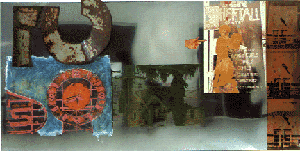other publications
Intellectual Property

Intellectual Property (IP) legislation defines ownership and copyright of such expressions as books, newspapers, magazines, works of art, sound recordings, films, radio and television broadcasts, software etc. Canada's Bill C-32 attempts to regulate unauthorized use of intellectual property, especially difficult in a time of transition from analogue to digital media. In many cases, the "theft" of IP does not remove the original, only makes a copy of it; the infringement is thus difficult to detect. The technology of the Internet encourages the widespread distribution of content, and most of this content can be quickly and easily copied and transformed.
A recent story in the New York Times (19 March 2001) illustrates how new technologies of distribution and publication create new copyright issues:
The U.S. Supreme Court next week will hear arguments in a seven-year-long dispute over the intellectual property rights of pieces written by freelance writers. At issue are previously published works stored in online databases and on CD-ROMs compiled by University Microfilms International. Current law states that freelancers sell their work to publishers for the printing and revision of a specified newspaper or magazine edition. The conglomeration of freelance authors assembled against publishing companies Time, the New York Times, and Newsday allege that the electronic storage of their work is no longer a "revision" but represents theft of their property. The argument has brought together academics and respected authors on both sides. Those aligned with the publishers fear that freelanced work would be eliminated from the digital record if companies were forced to pay fees to put the work online. The writers say that a clearinghouse, such as the one set up by the American Society of Composers, Authors, and Publishers, would solve the problem.
It's not just Napster facing lawyers over the illegal distribution of copyrighted material.
Questions of intellectual property have also been complicated by the postmodern aesthetic which often makes extensive use of sampling, versioning, and collaging of sound and visual elements to make new works of art. And there has been an active debate on the question of intellectual property between content providers--such as publishers and artists--who want more comprehensive legislation, and users who insist that freedom of expression, education, and cultural criticism take precedence over the rights of ownership. While the anti-copyright--or "copyleft"--movement insists that "information wants to be free," those in favour of strong copyright legislation see it as the foundation of secure commerce in an information economy.

Robert Rauschenberg, 1991
One particular work by Rauschenberg "includes a page torn from an old issue of Time magazine. The page in question contains an ad for an automobile, which is principally comprised of a photograph, and which photograph was taken by a commercial photographer. The photographer, Pete Turner, successfully sued Raushenberg for unauthorized use of the photograph." (www.benedict.com/visual/rausch/rausch.htm)
Understandably, copyright law is in a state of flux as governments and content providers seek to clarify the implications of digitizing all varieties of texts. The following web-sites provide information on current copyright issues. Of particular interest to students and instructors is the doctrine of fair use which, while currently supported by law in North America, has been significantly compromised in recent Canadian legislation (Bill C-32) where the principle is known as "fair dealing."
- Fair dealing for the purpose of research or private study does not infringe copyright.
- Fair dealing for the purpose of criticism, review, or news reporting does not infringe copyright if the following are mentioned:
- the source; and
- if given in the source, the name of the
- author, in the case of a work,
- performer, in the case of a performer's performance,
- maker, in the case of a sound recording, or
- broadcaster, in the case of a communication signal.
Copyright Links
- The Copyright Website: Fun, and lots of examples of copyright infringement
- Bill C-32: Amendment to the Copyright Act
- Intellectual Property Issues (excellent U.S. links)
- Detritus: dedicated to recycled culture.
- Anti-Copyright Policy: "If creativity is a field, copyright is the fence." (John Oswald).
- Plunderphonics: Or, Audio Piracy as a Compositional Prerogative
- ®™ark
- Viral Communications
- Negativland: Read about the group that took on U2.
- Napster: The Future of Digital Music
- Recording Industry Association of America (RIAA)